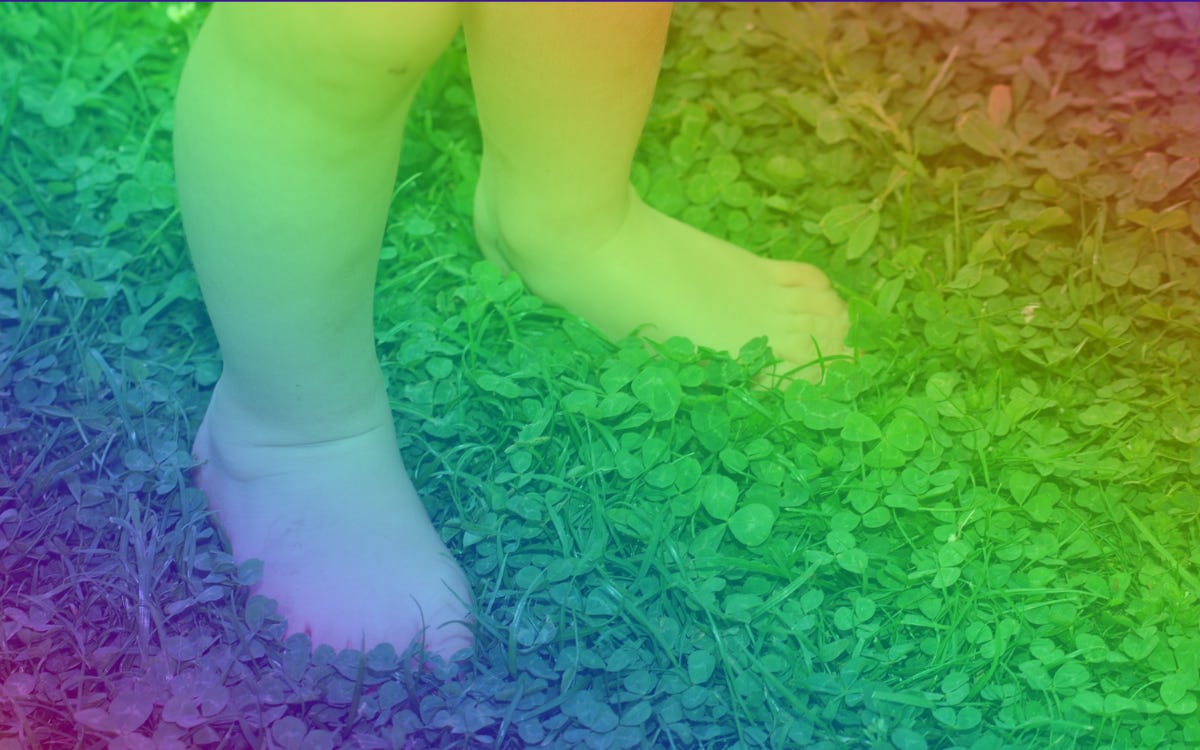How to feel more like future you
Strong emotions may be the answer to climate change and a friday feeling that's all about how we can really feel the future
🌱 The Environment Needs Empaths
According to a new University of Michigan study, people who respond less emotionally to images of damage to the environment are also less emotional and empathic in general. Or maybe it’s vice versa? In a series of online experiments, the researchers examined the emotional responses of more than 600 people to emotionally-charged images. People who were not concerned when viewing pictures of damage to the environment—such as oil spills on fire in a gulf—also did not feel bad about other images including crying babies, officers in distress, injured athletes, wounded soldiers, and even moldy food. This same group reported feeling less empathy for others in daily life. And they were less pro-environmental and less awed by nature. So, the verdict? The more emotional our response to climate change, the more empathetic were are to others, including people, animals, and the environment. This study was only about an emotional response to environmental devastation though. I wonder how much the growing list of climate emotions—flight shame, solastalgia, winter grief—contributes to empathy?
👓 Future Myopia
Cultivating a stronger emotional response to climate change is one way to motivate people to take action. But depending on how you do the math, we have known about climate change for over 100 years now. According to Mehitable Glenhaber, writing about Future Myopia in the just now sadly departed Real Life magazine:
Climate change messes up everything we think we know about how the past relates to the future. We are used to seeing the past as ruins. But how do we make sense of it when the past looks to the future and sees us in ruins instead?
The consensus is that we have to be better ancestors and one way to do that is to become more adept at personally, viscerally feeling the future. This leads us to the feeling for this week, which isn’t caused by technology but could be enhanced by it—future self-continuity.
Friday Feeling > Future Self-Continuity
🔑 DEFINITION
The perceived connection between your past, present and future self, which can be disrupted or facilitated through online recollection algorithms and augmented reality face filters.
See also: Algorithmic reminiscence, data doppelganger, present bias, affective forecasting
📜 A BRIEF HISTORY
The inspiration for the recent psychological research on the future self can be found in the writings of philosophers such as Joseph Butler who wrote in 1736:
“If the self or person of today, and that of tomorrow, are not the same, but only like persons, the person of today is really no more interested in what will befall the person of tomorrow, than in what will befall any other person.”
Considering the future self to be an entirely different person could have serious consequences. The theory was later expanded and championed by philosopher Derek Parfit who worried that people who regard the future self as distinct would have no more reason to care about that future self than a stranger. By implication, they would not save money, maintain their health, or cultivate relationships.
In a 2008 experiment by Princeton psychologist Emily Pronin, students volunteered to drink something disgusting for the sake of science. Those who signed up for that day only offered to drink 2 tablespoons. Those who signed up for next semester said they would drink half a cup. They were happy to let their future self worry about it.
Psychology researcher Hal Hershfield, inspired by Parfit, suspected that a disconnection from our future selves might explain many irrational elements of human behavior. At first, in a 2009 study, he focused on financial planning asking study participants to draw two circles to show how much their current and future selves overlapped and then seeing how much they had saved for the future. The less connection people felt with their future self, the less they saved.
The latest research out Cornell University’s College of Human Ecology tells us that our sense of connections with both past and future selves declines with increasing distance from the present. And that people who feel more connected to their past self also feel more connected to their future self.
Subsequent research suggests that adolescents with greater future self-continuity show less delinquent behavior, and that adults with greater future self-continuity act more ethically in business transactions. Future self-continuity may even operate at the group level since cultures that value respect for elders tend to save more and nations with longer histories tend to have cleaner environments.
💬 EXPRESSION
The internet is nothing if not a time travel machine. There’s predictive text suggestions in a messaging app or gmail encouraging us to continue to use language as we have in the recent past. There are recommender systems that project future desires by looking at past browsing behaviors. And there are reminiscence databases like Facebook Memories or Apple photos that show us glimpses of the past in the present. While we may bristle at being exhorted to repeat our pasts, it does lend itself to a kind of continuity.
We can also flash forward thanks to games and apps that let us try out possible future selves or see ourselves projected into the future. People share FaceApp’s aging filter to compare AI-aged photos of themselves to their parents, despite privacy concerns (after all, that’s a problem for future you). But Snapchat aging filters are not all cringe-fun, augmented reality can act as a vividness nudge. Making the future more vivid, in this case seeing a version of our older self with an aging filter, can help us to experience future self-continuity according to psychologist Hal Hershfield.
 Tiktok failed to load.
Tiktok failed to load.Enable 3rd party cookies or use another browser
Memes about future me aside, future self-continuity is part of our everyday experience online. It’s just that we don’t yet know how to translate that into positive behavioral nudges.
💗 EXPERIENCE
Viewing yourself through the lens of an aging app can help you to vividly imagine future-you. On its own though, it won’t do much. To really feel like future-you, you need a leap of imagination. So far, Snapchat filters and aging apps only show us a picture that we can quickly put out of mind.
Combining a photo of yourself in the future with an automated recollection system, that shows you your age-progressed self at random intervals might help in the same way as writing letters to your future self—or making videos in the style of Bo Burnham’s movie Eighth Grade—could push it further.
🎩 PERSON OF INTEREST
Psychologist Dan P. McAdams, a professor at Northwestern University, believes that the creation and maintenance of life narratives are the foundation of a happy life. It’s the frame for “disparate ideas, character, happenings, and other events that were previously set apart.” Rather than a Wikipedia collection of facts, a life narrative is an integrative personal story about what happened, why it’s important, and what it means for the person in the future. Narrative is our default mode as humans so Dan McAdam’s life story interview technique might just be part of the picture when it comes to future self-continuity too.
🎉 FUN FACT
More than 100 brain-imaging studies have reported that when you think about yourself, your medial prefrontal cortex powers up and when you think of others it powers down. When you think about yourself in the future, your brain acts as if you’re thinking about someone else entirely. This glitchy brain behavior makes it harder for us to take action that benefits our future!

❝ QUOTE
“Why would you save money for your future self when, to your brain, it feels like you’re just handing away your money to a complete stranger?” Hal Hershfield, Psychology Professor at UCLA’s Anderson School of Management
💪 PRO TIP
Futurist Jane McGonigal has developed a series of thought exercises and creative activities to simulate a “first-person future” and nudge your current self to act in its future best interest. While a brush with mortality is the best way to think about the future, according to her research, you can also prompt future thinking by simply doing a search for the future of X and then imagining yourself living in that future.
Another way to imagine yourself in the future is to practice counterfactual thinking. Imagine how your past could have turned out differently and how that would change your future. In McGonigal’s words, “Unlock your brain to predict a past that never was and to remember a future that hasn’t happened.”
💡 BIG PICTURE
According to the latest census, nearly 180 million Americans alive today should expect to still be alive in 50 years. With life expectancy dramatically increasing throughout much of the world, even given recent setbacks, people have to make choices with a longer future in mind than they ever had to before.
Future self-continuity is important to not only our actions as individuals, like saving for retirement or eating fewer processed foods, but it may also be critical to take on issues with long-term social implications, whether population shifts or wicked problems like climate change. There are low-tech ways to enhance psychological connectedness, such as listing ways that you expect to be similar (or different) in the future or writing dramatic characterizations of a future self, but high-tech ways hold even more promise. Whether it’s having to integrate your past actions, revealed in ubiquitous recollection algorithms, into your present sense of self or contending with your 20 years older face in an app, current tech nudges us to create that sense of continuity.
🤔 LEARN MORE
Read this overview of future self-continuity and the work of Kelly McGonigal and Hal Hershfield in The New York Times
Here’s an NPR interview with Hershfield about how aging yourself with an app can help you save
You can age your own photograph online through April Age developed by the Ontario Science Center adding external factors like smoking, weight shifts, and sun exposure
Watch Publicis Conseil’s ad campaign for ING Orange that uses motion capture software and a combination of 3D rendering, aging simulation, and browser technologies like Google’s speech API and WebGL to let you chat with a version of your future self
Take Jane McGonigals’ Coursera course to learn more techniques for making your future self less of a stranger
Reread Oscar Wilde’s The Picture of Dorian Gray if you’d rather get a stern warning about the dangers of literally disconnecting from your future self!
👵🏽👴🏻👵🏽👴🏻👵🏽👴🏻
Me: Think about your future
Me to me: No think about memes
That’s all the feels for this week!
xoxo
Pamela 💗





